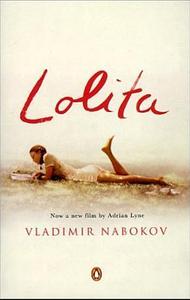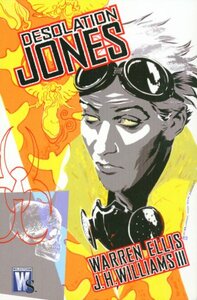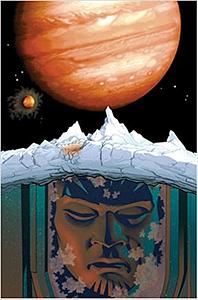You need to sign in or sign up before continuing.
Take a photo of a barcode or cover
adam_mcphee's Reviews (2.87k)
Kim Stanley Robinson describes a very green future indeed. Interestingly, he works out a science fiction concept I first encountered when reading about the neohumans in [b: The Possibility of an Island|263985|The Possibility of an Island|Michel Houellebecq|https://images.gr-assets.com/books/1388609079s/263985.jpg|1169822], and I think maybe the neohumans in [b: Oryx and Crake|46756|Oryx and Crake|Margaret Atwood|https://images.gr-assets.com/books/1482961692s/46756.jpg|3143431] used it too. But I like KSR's version best, in the old stories it was always something that could only be bred into future generations, but KSR realizes there's actually an ancient technique that might allow any old human to incorporate one of nature's greatest innovations into their body. The economic consequences of such an act are also explored and found to be quite uplifting.
Didn't really add anything to the novel.
This is how you should write about aliens: no WW2 metaphors and no humans with makeup. Just incomprehensibility and the threat of extinction if understanding can't be established. Columbus and Sepulveda writ large.
As for the humans: the central message of the book -- that humans have a troubling tendency to see the way things are now as the way they've always been and always will be -- is used as a warning against complacency in the book's geopolitics but sounds much more optimistic when applied to its inclusive gender politics.
Will continue to read.
As for the humans: the central message of the book -- that humans have a troubling tendency to see the way things are now as the way they've always been and always will be -- is used as a warning against complacency in the book's geopolitics but sounds much more optimistic when applied to its inclusive gender politics.
Will continue to read.
Typical of middle-tier Ellis: plenty of big ideas, and even a few interesting characters, but never enough time to explore them. The climax in particular was a bit too formulaic for me. Closer to an outline for a summer blockbuster than something that could stand on its own.
An elegy for the space shuttle program, wrapped in the weird skin of a Warren Ellis comic.
(Aliens attach an alcubierre drive to a missing shuttle and also add an organic layer of skin to eat the excess radiation, which struck me as implausible because wasn't there something about an alcubierre drive needing to radiate approximately the amount of energy found on Jupiter to operate or something? Also how does skin survive in the vacuum? Still it's a cool idea.
Spoiler
(Aliens attach an alcubierre drive to a missing shuttle and also add an organic layer of skin to eat the excess radiation, which struck me as implausible because wasn't there something about an alcubierre drive needing to radiate approximately the amount of energy found on Jupiter to operate or something? Also how does skin survive in the vacuum? Still it's a cool idea.
Eight short stories, four of which I've read previously in [b:The Best of Kim Stanley Robinson|8171810|The Best of Kim Stanley Robinson|Kim Stanley Robinson|https://images.gr-assets.com/books/1283865817s/8171810.jpg|13018037].
Of the new-to-me stories, there's:
Mercurial -- A Watson-type helps his Holmes solve a murder and cover it up for the sake of art on Mercury's capital, Terminator, the city that runs around the planet on train tracks, pushed by the sun. Sort of a precursor to the Swann character and her home in [b:2312|11830394|2312|Kim Stanley Robinson|https://images.gr-assets.com/books/1405778758s/11830394.jpg|16785236].
The Disguise -- The dangers of using memory implants to help theatre actors is explored when a performer becomes murderous while staging a newly rediscovered Jacobean revenge tragedy. I loved the concept, but the execution was kind of disappointing, sort of like every theatre performance I've ever attended.
Coming back to Dixieland -- Asteroid miners enter a jazz contest and play for all their worth in an attempt to win their passage home. Somewhat predicts the American Idol/X-Factor nonsense of the last decade.
Stone Eggs -- a PKD-inspired vignette about a runaway on a Greyhound bus in the desert who discovers he may be a simulacrum.
Stories I'd already read: Venice Drowned, Ridge Running, The Lucky Strike & Black Air.
Overall, I'd say my favourites were Mercurial, Venice Drowned, The Lucky Strike and Stone Eggs.
Of the new-to-me stories, there's:
Mercurial -- A Watson-type helps his Holmes solve a murder and cover it up for the sake of art on Mercury's capital, Terminator, the city that runs around the planet on train tracks, pushed by the sun. Sort of a precursor to the Swann character and her home in [b:2312|11830394|2312|Kim Stanley Robinson|https://images.gr-assets.com/books/1405778758s/11830394.jpg|16785236].
The Disguise -- The dangers of using memory implants to help theatre actors is explored when a performer becomes murderous while staging a newly rediscovered Jacobean revenge tragedy. I loved the concept, but the execution was kind of disappointing, sort of like every theatre performance I've ever attended.
Coming back to Dixieland -- Asteroid miners enter a jazz contest and play for all their worth in an attempt to win their passage home. Somewhat predicts the American Idol/X-Factor nonsense of the last decade.
Stone Eggs -- a PKD-inspired vignette about a runaway on a Greyhound bus in the desert who discovers he may be a simulacrum.
Stories I'd already read: Venice Drowned, Ridge Running, The Lucky Strike & Black Air.
Overall, I'd say my favourites were Mercurial, Venice Drowned, The Lucky Strike and Stone Eggs.








